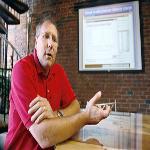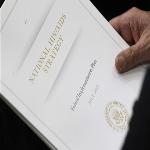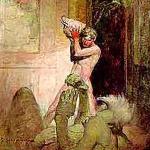This is the VOA Special English Economics Report.
这里是美国之音慢速英语经济报道。
Recently, the United States Supreme Court decided a case on the property rights of inventors. The question was whether a business method is enough of an invention to receive a patent. Patents are a form of intellectual property. They give legal protections to individuals and companies against the copying of their inventions.
最近,美国最高法院就一件发明者的知识产权案件作出判决,该案件的焦点是商业方法发明是否能够申请专利。专利是知识产权的一种形式,它为个人和公司防止他人抄袭其发明提供法律保护。
Bernard Bilski and Rand Warsaw wanted to patent a method to let traders protect against the risk of price changes in energy markets. The United States Patent and Trademark Office said no.
伯纳德·比尔斯基(Bernard Bilski)和兰德·沃索(Rand Warsaw)希望将一种保护交易者免受能源市场价格变化风险的方法注册专利,美国专利和商标局拒绝了这项申请。
So the inventors went to court. Again they were told no. Finally, the case went all the way to the Supreme Court. Last month, all nine justices said no.
因此,发明人走上法庭,却再次被拒绝。官司最终一路打到了最高法院。上个月,最高法院的所有9名法官也再次予以拒绝。
But they only said no to a patent in this case. Patent lawyer Meredith Martin Addy in Chicago explains that the court ruled narrowly.
但他们只是拒绝了该案件中的专利申请。芝加哥专利律师梅雷迪斯·马丁·阿迪解释说,法院的裁决很严格。
MEREDITH MARTIN ADDY: "The Supreme Court held that there is no categorical rule denying patent protection for business method patents."
阿迪:“最高法院坚称,没有明确法规拒绝商业方法专利的专利保护。”
When patent laws were first developed, most patents were for machines. But since the late nineteen nineties, inventors of business methods and processes have increasingly sought patent protection.
当最初制定专利法时,大多数都是机器专利。但20世纪90年代末以来,商业方法和流程发明人正日益寻求专利保护。
Technology companies, especially software makers, watched the case closely. They were concerned that the Supreme Court would require a test of some kind that could limit what can be patented.
科技企业,尤其是软件厂商都密切关注该案件。他们担心最高法院可能要求进行某种测试,从而限制专利申请的类型。
In its ruling, the court decided against the patent only because the idea was too abstract. Law professor Michael Meurer of Boston University gives a famous example from physics. It involves the relationship of energy, mass and the speed of light, written as the letter c.
在这项裁决中,法院拒绝其专利申请仅仅是因为该想法过于抽象。波士顿大学法律教授迈克尔·梅尔例举了物理学方面一个著名的案例,该案例涉及到能量、质量,以及用字母c的表示的光速之间的关系。
注:爱因斯坦著名的质能方程式E=mc^2,E表示能量,m代表质量,而c则表示光速。
MICHAEL MEURER: "The Supreme Court has said, for example, if Albert Einstein determined that E = mc squared -- which he did -- he never would have been able to get a patent on that. That's too abstract."
梅尔:“最高法院举例称,爱因斯坦认为E=mc^2 — 但他永远不可能获得这项专利注册,这太抽象了。”
In the Bilski case, the court said patent examiners could consider what is known as the machine-or-transformation test. This is the idea that a patent should be given to a machine or something that creates a material change, like a chemical process.
在比尔斯基(Bilski)案件中,法院称,专利审查员可考虑所谓的“机器或转换测试”。也就是说,专利应该授予机器,或产生实质变化的东西,例如化学流程。
But a majority of justices said patent examiners must also protect innovation. Patent lawyer Meredith Martin Addy says no one wants to suppress creativity.
但是,大多数的法官也表示,专利审查员必须保护创新。专利律师阿迪说,没有任何人希望压制创造力。
MEREDITH MARTIN ADDY: "You can have that test, but it can't be an exclusive test because of the nature of the patent laws which are to protect new and unknown inventions."
阿迪:“你可以要求测试,但它不能是唯一的途径。因为专利法的本质是保护新的,未知的发明。”
Now, more cases will be needed to define the legal limits of business method patents. Such patents already exist. In March, for example, after re-examination, Amazon.com received a patent for its one-click ordering process.
现在,现在需要更多的案例来确定商业方法专利的法律界线。这种专利已经存在。例如,三月份,经过重新审查,亚马逊在线(Amazon.com)获得了“一键订购”专利。











